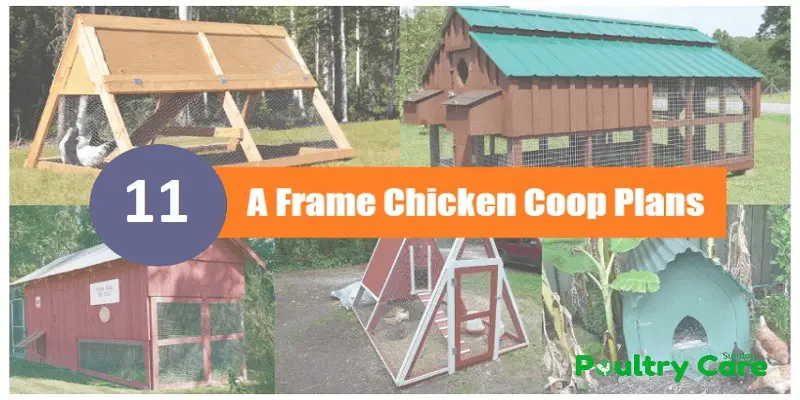Eggs play a significant role in our breakfast every day and in most hurrying moments. They are easy to prepare and always come in handy when we have yet to plan our meals for the day. So, caring for our chickens in our backyard helps a lot. It will save us time, energy/gas, and money. What? Chicken coops might be costly. Actually, no!
There are a lot of chicken coops available on the market these days. Some are complicated and costly, yet some are just as simple as 1-2-3, the A-frame chicken coops. Let me give you 10 easy-to-build A Frame Chicken Coop Plans & Ideas so you can start to build your own.
A Frame Chicken Coop Plans – Top 11 Plans & Idea
1. Portable A-frame Chicken Coop Plan
This portable A frame is excellent for 3-4 chickens at the same time. They can move freely inside it. With the aid of chicken wires, they are safe from predators like hawks and other wild animals who love to hunt chicks for food. This chicken coop can be built in a few hours as long as the tools and materials are all prepared before its construction.
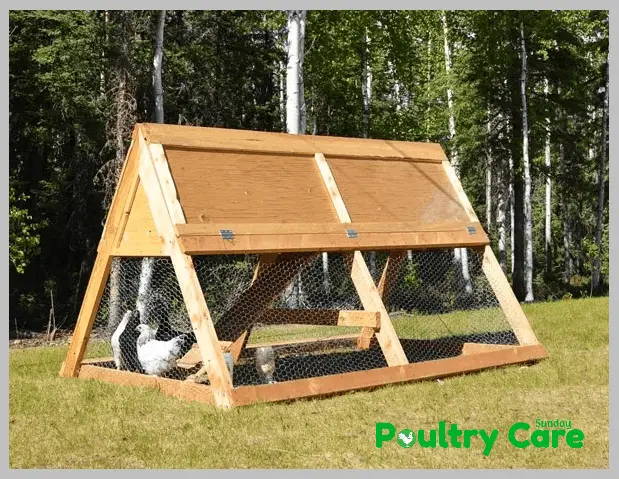
Related Article – Wyandotte Chickens, In the Pecking Order, Come Out Tops
2. Old Swing to New Wing Chicken Coop
The idea of making this fantastic chicken coop came from the need for a chicken house but having a small budget. With just a little research and some do-it-yourself tricks, the old swing can be made to accommodate 4-7 chickens, depending on how large the swing frame is. We can add an entry and exit in between the poles for easy access when feeding the chickens, gathering eggs, and cleaning the chicken coop.
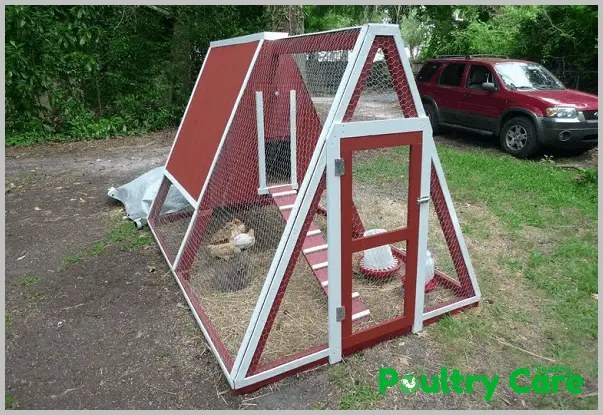
3. Double Story Chicken Coop
This sturdy chicken coop idea is excellent for those who have small areas in their backyard. For easy access, it stacks a roof that opens and closes for your convenience. It is very much like the portable A-frame chicken coop with a twist – the ladder and the second floor! With this design, chickens may roam freely as they like when they feel like it! Safe your chickens from bad weather and predators, especially at night.
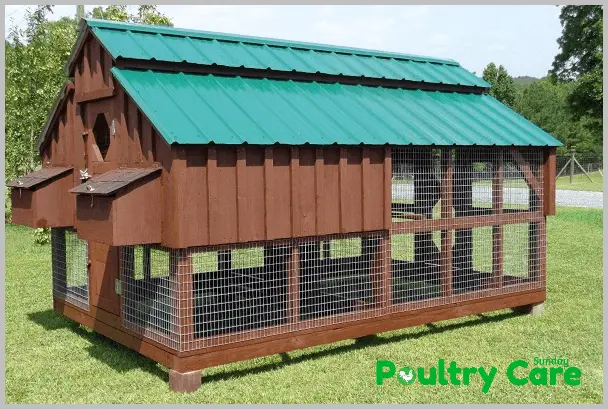
Related Article – List of 80 Chicken Breeds – Information and Pictures
4. Gothic Chicken Coop
Styled like an old house, this ark design is best for a chicken or two. It uses some old refurbished plywood, some hinges, and some old or leftover roof. A floor is added to the large chicken coop that can be scraped out of it. This floor also serves the chicken as their warm blanket during cold nights. A corrugated overhanging roof, which will be weather-proof, is also added to the Gothic chicken coop.
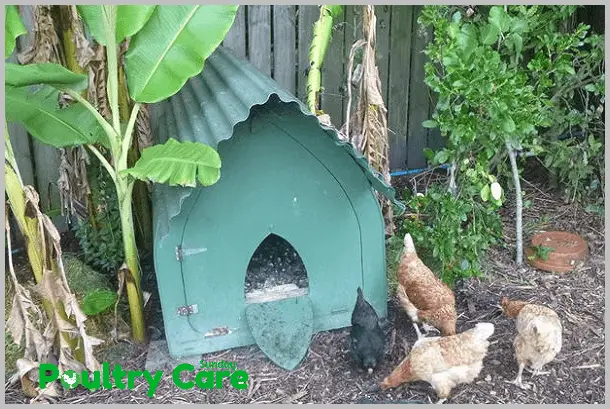
5. Mobile A Frame Chicken Coop
This do-it-yourself chicken coop plan is best for those who have a large backyard where the chickens can be moved here and there to feed on the healthy grass. It uses recycled boards from the snow fence and the galvanized steel car frame. This Mobile A-Frame chicken coop is very much like the portable chicken coop. The only difference is the wheel put into it for easy transport or transfer.
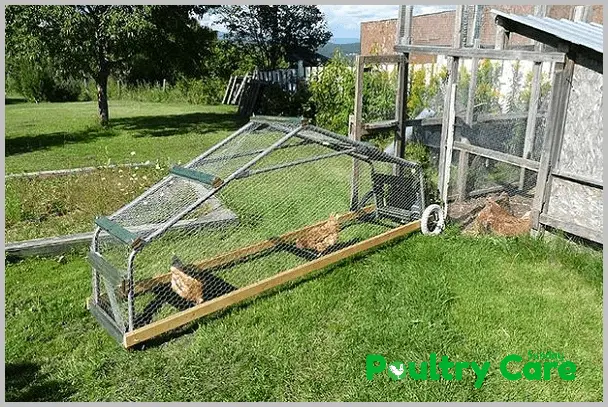
6. Simple A Frame Chicken Coop
This is the most simple and easy-to-follow chicken coop design and plan. It gives you not just the exact instructions but also the kind of wood you must use. Everything is laid out, from assembling the frames to building them and the end panel, attaching the bottom end, fitting the side supports and the chicken coop handles, and creating the upstairs room and its doors.
It recommends using pressure-treated, pine or cedar wood so the chicken coop will last a long time against all kinds of weather, of seasons. So, carpentry master or not, this chicken coop is for you!
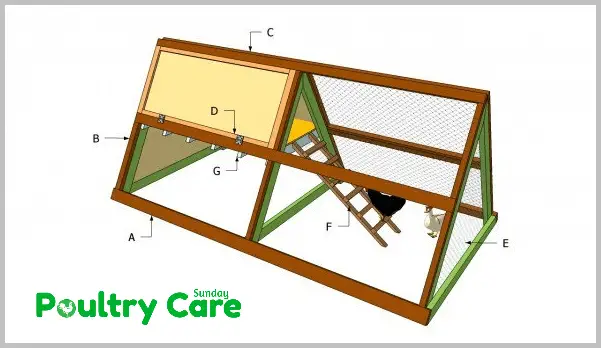
7. Ark and Runs A-frame Chicken Coop
This A-frame chicken coop is a complete package, for it is designed with a chicken run. It is created for 12 chickens- they can move freely inside it without overcrowding. This chicken coop can also be transferable if you use light materials only. You would need an extra pair of hands, especially during the nailing and stapling of this chicken coop. Waterproofing and correct netting are also emphasized in this chicken coop design.
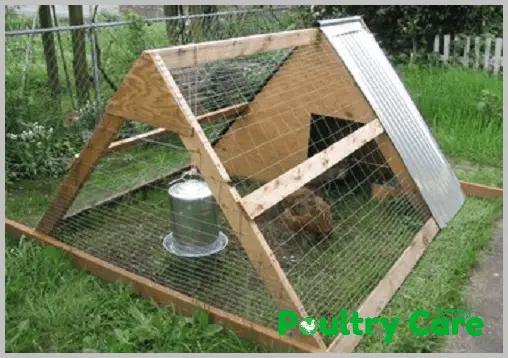
8. BarnGeek A frame chicken coop
The dimensions of this chicken coop are 6 feet by 4 feet, and it is designed for 6 chickens. One would need some rough-cut lumber, a hammer, nails, and a circular saw. Once built, you’ll find this BarnGeek chicken coop design is an owner-friendly one because of the easy access when you gather to feed and water the chickens and, of course, when you gather those fresh eggs!
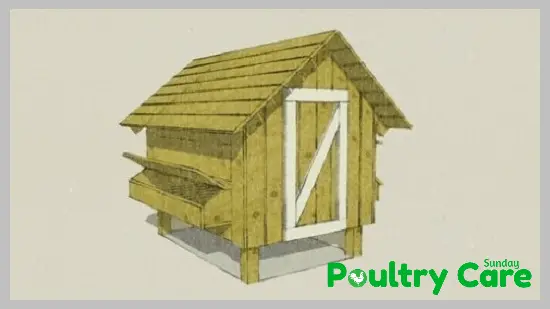
9. Mammy’s 1895 A-frame chicken coop
This chicken coop is capable of housing 32 chickens with dimensions of 16 feet by 8 feet. This is very convenient for those who want to raise and sell chickens and eggs for a living. With Mammy’s 1895 chicken coop design, chickens and eggs are safe with the nesting boxes and roosting poles inside. Also, there are drop-through perches enclosed in their protective wire designed for easy cleaning. Foremost, this chicken coop is durable and protected. Predators cannot come close due to their rigid wire screening.
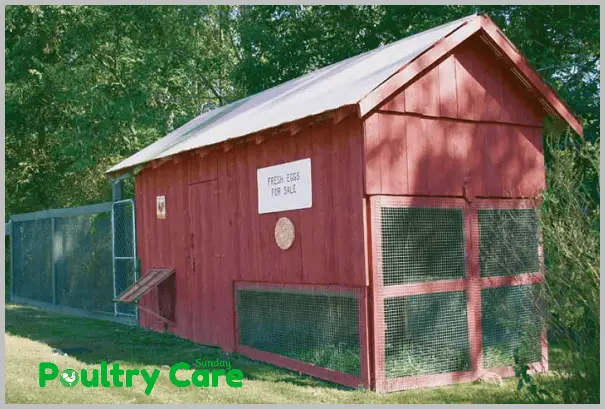
10. The South City Chicken Coop
This is advisable for those who have an area that is long on the side and no wide front and for those who live in the city. Living in the city means the chicken coop must be presentable to others who pass by or visit. This coop design has many open windows for ventilation and natural lights come in. Air can circulate and escape at the top of the roof through a ridge vent. Depending on weather conditions, windows can be opened or closed.
This entire coop design may cost you less than 500 bucks. Checking first you’re already available material may save you a lot by buying only what is needed.
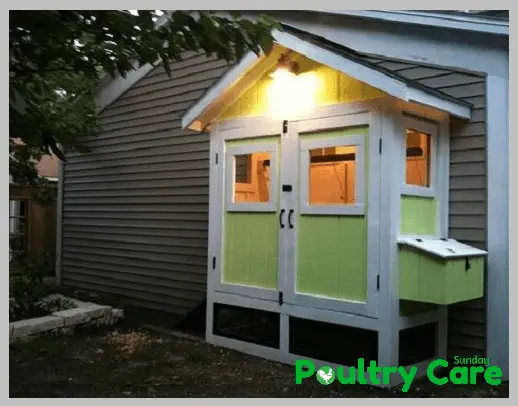
11. Medium Chicken Coop & Run Plans for 6 Chickens
Providing up to 42 square feet of free space for your chickens to roam, the coop also features elevated nesting cabinets on the sides. This medium chicken coop makes a wise choice not only for beginners but also for those who live in areas with torrential rain.

Coziwow outdoor cat enclosure combines high-quality materials and durable designs, ensuring your cat remains in a secure and cozy environment while enjoying the great outdoors. It is looking to provide a safe and comfortable outdoor space for your beloved cat. Coziwow offers professionally designed outdoor cat enclosure products that allow your feline friend to enjoy the freedom of the outdoors without any safety concerns.
Not only that, our products come in a variety of sizes and styles to cater to different outdoor space needs. Create the perfect outdoor haven for your pet cat with Coziwow’s cat outdoor enclosure. At Coziwow, we are committed to providing the highest quality living experience for your pets, giving you peace of mind and your pets pure joy. Click the link now to learn more about our outdoor cat enclosure products and choose the perfect space for your beloved feline friend.
How to build a frame chicken coop?
Building a frame chicken coop involves several steps, from planning and design to construction and finishing touches. Here’s a step-by-step guide to help you through the process. Remember, the size and complexity of your coop will depend on how many chickens you plan to keep and the space available in your backyard or farm.
Step 1: Planning and Design
- Determine Size: Decide how many chickens you plan to keep. As a general rule, plan for 2-3 square feet per chicken inside the coop, and about 8-10 square feet per chicken in an outdoor run.
- Select Location: Choose a dry, elevated spot to avoid flooding. Ensure it gets sunlight but also has some shade.
- Design Your Coop: Plan for ventilation, a roosting area, nesting boxes (1 box for every 3-4 chickens), and a feeding/water area. Windows should be placed for good airflow but designed to keep predators out.
Step 2: Gathering Materials
- Lumber for the Frame: 2x4s are commonly used for the frame.
- Plywood for Walls and Floor: Use exterior-grade plywood.
- Hardware Cloth: For ventilation windows and to secure the outdoor run.
- Roofing Material: Asphalt shingles or metal roofing are durable options.
- Nails, Screws, Hinges, and Latches: For assembly and doors/nesting box access.
- Tools: Circular saw, drill, hammer, staple gun, measuring tape, level.
Step 3: Building the Frame
- Lay the Foundation: Use concrete blocks or treated lumber to elevate the coop off the ground.
- Construct the Frame: Assemble the floor, walls, and roof frame using 2x4s. Ensure everything is square and level as you go.
Step 4: Adding Walls, Roof, and Floor
- Install the Floor: Place plywood on the frame, and secure with screws.
- Wall and Roof Installation: Attach plywood walls and then the roof. Consider adding a slanted roof for water runoff.
- Secure with Hardware Cloth: Cover windows and any other openings with hardware cloth for ventilation and predator protection.
Step 5: Interior Setup
- Install Nesting Boxes: Place them in a quiet, dark area of the coop.
- Add Roosting Bars: Ensure they are higher than the nesting boxes to discourage roosting in the boxes.
- Feeding and Water Area: Set up areas for feed and water that are easily accessible.
Step 6: Outdoor Run
- Enclose with Hardware Cloth: Use 2x4s to frame an attached outdoor run and enclose it with hardware cloth.
- Secure the Perimeter: Bury the hardware cloth several inches into the ground to prevent predators from digging under.
Step 7: Finishing Touches
- Paint or Stain: Protect the wood and add aesthetic appeal.
- Add Latches: Secure doors and the nesting box lid with predator-proof latches.
- Landscaping: Consider adding a dust bath area and planting chicken-friendly vegetation around the coop.
Step 8: Maintenance and Care
- Regularly clean the coop, replenish food and water, and check for signs of wear or predator attempts.
- Periodically inspect and maintain the coop to ensure a safe and healthy environment for your chickens.
Building a chicken coop can be a rewarding DIY project that enhances your self-sufficiency and provides a comfortable home for your chickens. Make sure to tailor the coop to your specific needs, considering your climate, the predators in your area, and the well-being of your chickens.
FAQs: A-frame chicken coops
What is an A-frame chicken coop, and how does it differ from other coop designs?
An A-frame chicken coop is a triangular-shaped structure that resembles the letter “A”. This design is streamlined and compact, making it ideal for small flocks and backyards with limited space. It differs from other designs by its sloped roof that extends to the ground on two sides, providing both shelter and run space within a single footprint. This contrasts with more traditional, box-shaped coops that may require additional space for an external run.
How many chickens can comfortably fit in an A-frame coop?
The capacity of an A-frame chicken coop depends on its size, but generally, these coops are suited for small flocks. A typical A-frame coop can comfortably house 3 to 5 chickens, given that each bird requires about 2 to 3 square feet of space inside the coop and more space in the run. It’s essential to ensure enough room for each chicken to roost, feed, and forage without crowding.
What are the benefits of choosing an A-frame chicken coop?
A-frame chicken coops offer several benefits, including their economical use of materials and space, ease of construction for DIY enthusiasts, and the integrated shelter and run that maximizes outdoor access for the chickens. Their sloped design also helps with rainwater runoff and can make it more difficult for predators to access the coop, enhancing protection for the flock.
Can I build an A-frame chicken coop myself, and what materials will I need?
Yes, A-frame chicken coops are popular among DIY builders due to their simple design and construction. Basic materials needed include lumber for the frame (2x4s are commonly used), plywood or exterior-grade wood for the siding, hardware cloth for ventilation and predator protection, roofing material (such as shingles or corrugated metal), and hardware like screws, hinges, and latches. You’ll also need tools like a saw, drill, hammer, and measuring tape.
How do I ensure my A-frame chicken coop is predator-proof?
To make your A-frame coop predator-proof, ensure all openings are covered with hardware cloth rather than chicken wire, which predators can easily breach. The coop’s door should fit snugly and be equipped with secure latches that raccoons and other intelligent predators can’t open. Consider adding an apron of hardware cloth around the perimeter of the coop, buried several inches into the ground to prevent digging predators from getting in. Additionally, regularly inspect the coop for any vulnerabilities and repair them promptly.
Conclusion
A-frame chicken coops are a popular and functional option for backyard chicken enthusiasts. These coops are easy to build, with plans and ideas readily available online. They offer ample space for chickens to roost and nest while protecting them from the elements. Overall, A-frame chicken coops are a great choice for anyone looking to keep chickens in their backyard.
Last Updated on January 14, 2025 by Pauline G. Carter

